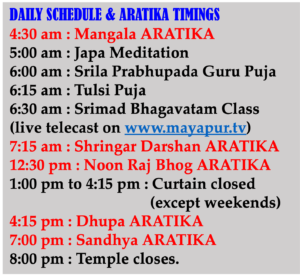Vedic Yajna
Yajna and its origins
‘Yajna’ is the Vedic method of worshiping Visnu by offerings of ghee, grains, spices, fruit, etc. into the sacred fire accompanied by the chanting of mantras. According to the Amara-kosa, the word ‘yajna’ is derived from the Sanskrit root ‘yaja’ – to worship. In the Purusha Sukta, we read that the demigods, after being created by the Lord, desired to worship Him through the system of yajna. By their will and contemplation, they offered the Lord Himself as the first oblation for the creation of the universe; this was the first yajna and from it emerged the first elements of life. Furthermore, the Puranas describe how all yajnas have their basis in the Supreme Lord, all varieties of yajnas emerged from the body of Yajna-varaha.
The Fire
‘Yajna’ is the Vedic method of worshiping Visnu by offerings of ghee, grains, spices, fruit, etc. into the sacred fire accompanied by the chanting of mantras. According to the Amara-kosa, the word ‘yajna’ is derived from the Sanskrit root ‘yaja’ – to worship. In the Purusha Sukta, we read that the demigods, after being created by the Lord, desired to worship Him through the system of yajna. By their will and contemplation, they offered the Lord Himself as the first oblation for the creation of the universe; this was the first yajna and from it emerged the first elements of life. Furthermore, the Puranas describe how all yajnas have their basis in the Supreme Lord, all varieties of yajnas emerged from the body of Yajna-varaha.

-
SAMSKARA: The word Samskara (from the Sanskrit sam-s-kara) means “perfect deed”. It is highly beneficial, purifying and sanctifying ceremony. Its rite rests on a series of actions in harmony with metaphysical rules that manifest the invisible reality, which our gross senses cannot perceive, in the visible world. Samskaras eradicate bad karma and increase the auspicious influences of material nature.
MAIN Vaisnava samskaras (scroll down for more details):
The distinctive feature of the chanting of the Holy Names (Hare Krishna Hare Krishna Krishna Krishna Hare Hare / Hare Rama Hare Rama Rama Rama Hare Hare) in that it makes perfect any ceremony one may undertake, as explained in Srimad Bhagavatam (8.23.16):
Mantratas tantratas chidram
Desa kalartha vastutah
Sarvam Karoti nischidram
Anusankirtanam tava
“There may be discrepancies in pronouncing the mantras and observing the regulative principles, and moreover, there may be discrepancies in regard to time, place, person, and paraphernalia. But when Your Lordship’s Holy Name is chanted, everything becomes faultless.”
Contact the New Goloka Yajna Priests:
Vikasananda Krishna Dasa
vkd.bcs@outlook.com +1(714) 343-2074
Aditya-Narayan Dasa
adityanarayan.bcs@gmail.com +1(407)451-7735


1. Vivaha (marriage) ceremony
Vivaha means “to maintain, to uplift” (dharma, that is). The vivaha samskara, by its purifying influence, helps one to understand the goal of marriage which could enable husband and wife to live peacefully and purify themselves, as well as free their children from ignorance and from all misidentifications of the soul the with the body. Parents must see that a healthy atmosphere surrounds their children.
In the Vedic tradition, marriage is a sacred act, a religious commitment and never a simple agreement. Union between a man and a woman is not merely physical, but also a moral and spiritual one. It marks the beginning of a life of responsibility. Couple relationships should be led by mutual feelings of faithfulness and devotion which should also be turned towards God.
Marriage is a sacrifice, austerity which helps us to develop patience and tolerance. The sacredness of marriage is symbolized by the fire ceremony and sacred mantras.
We conduct bonafide vedic vivaha ceremony and include the following steps.
- Milani (Greeting the bridegroom): The bridegroom is solemnly received by his in-laws who offer him a flower garland and madhuparka (caranamrta).
- Guru pranama: The bridegroom offers his respects to the spiritual master according to his spiritual line and sits within the sanctified arena (vivaha-mandapa)
- Darsana: the bride enters the room accompanied by her friends
- Svagata: welcome address and introduction to the ceremony
- Recitation of prayers
- Kanya dana: father of the bride gives his daughter to his future son-in-law
- Panigrahanam: tying a garland of flowers around the couple’s intertwined hands a symbol of their union
- Mangalya dharan: exchanging wedding rings, exchanging garlands
- Agni-sthapana: requesting the Lord to manifest in the fire
- Pradaksina: circumambulating the divine fire
- Sapta padi: stepping in 7 circles and taking 7 sacred vows
- Prasadam: sumptuous feast
Suggested donation:
- Ceremony performed at the temple: $501
- Ceremony performed at a location outside the temple: $TBD
This ceremony is meant to make the pregnant woman and future mother mentally peaceful and happy. It is important that the mother be mentally healthy for the embryo to develop perfectly. This ceremony plays an important role by chasing away from the woman’s mind all kinds of subtle entities that enjoy disturbing the mind. This ritual thus performed gives good brain and intelligence to the child. Suggested donation: $301
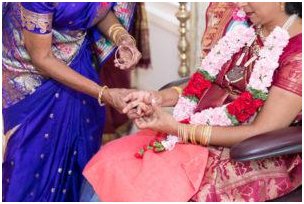
This ceremony is performed to give the newborn a suitable name. A good combination of sounds, when forming a name in harmony with the person receiving it has a most important effect. Suggested donation: $301
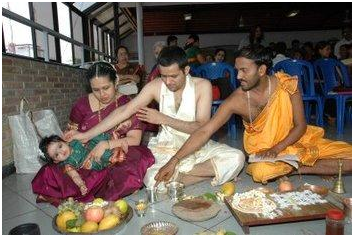
This ceremony is performed to shave of the first hairs (which is considered impure). A mixture of sandalwood pulp and saffron, first offered to the deities, should be applied to the child’s head. Suggested donation: $301
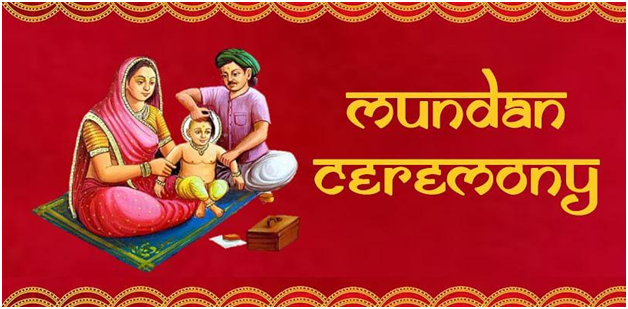
This ceremony is performed when the baby first starts to eat solid foods. During this ceremony, the priest asks Lord Vaisvanara (Lord Visnu) to enter the child’s body to accept the solid foods he will eat through his life. Lord Krishna says in Bhagavad Gita (15.14), “ I am the fire of digestion in the bodies of all living entities, and I join with the air of life, outgoing and incoming, to digest the four kinds of foodstuff.” Suggested donation: $301
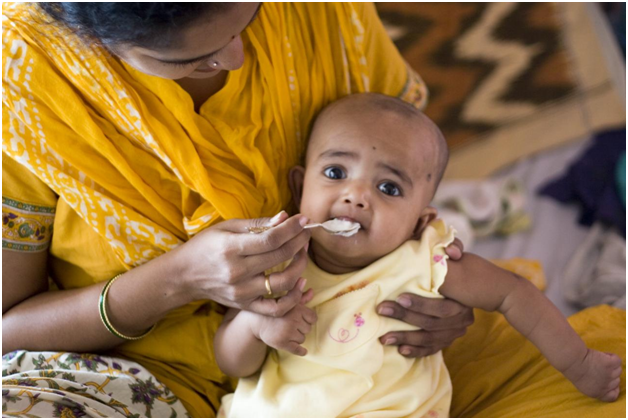
This ceremony is performed just before the child enters school. In this ceremony, Adi Sarasvati devi (the Sakti of Lord Narayan and consort of Nama prabhu (vidya-vadhu), is worshipped for she makes education auspicious. The learning tools (such as book, pencil, or technological equivalent) are placed at the feet of Adi Sarasvati.
Suggested donation: $301
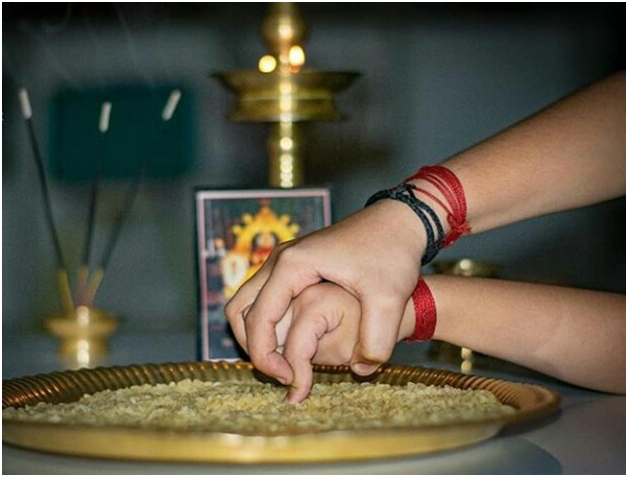
Initiation is of topmost importance for those who seek self-realization. Initiation is that solemn rite which links us to a disciplic succession (parampara). The spiritual master calls the initiates and asks them to take their vows that they will follow for the rest of their life: to follow the four regulative principles and daily chant minimum sixteen rounds of Hare Krishna mahamantra. This ceremony is almost exclusively done at the ISKCON temple.
This ceremony is performed for the invocation of auspiciousness and purification, draw positive energy from the universe, establish calmness and peacefulness in our lives and homes. Suggested donation: $301
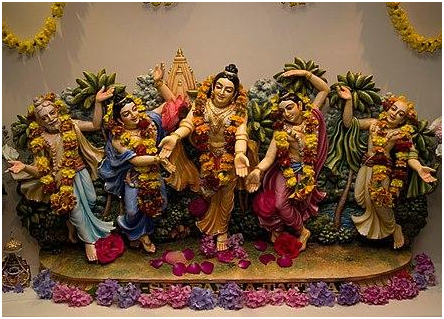
This ceremony is performed when entering new living facilities such as home, business, shop, center or other physical location for the purpose of inauguration and sanctification of the facility.
Suggested donation: $301
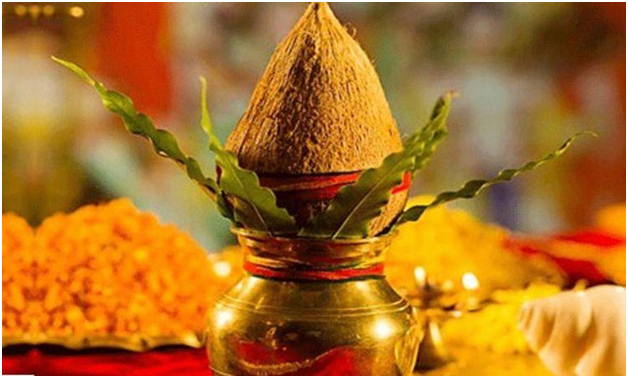
This is the last samskara, the last ritual associated with the body which it will purify one last time. This ritual is performed in order for the soul to become detached from the body and not have to take on the form of a ghost (preta), as well as to make sure the departed soul is promoted to a better world. Since we cannot imitate this ritual the way it is done in India, we follow the laws in force in USA. Certain minimum items of the ceremony are performed. This is usually done at the funeral home.
Suggested donation: $301
So that the deceased does not wander like a ghost in the ether with only a subtle body, but instead takes on a body with which he may live pleasantly on the planet of the Pitrs, which offers certain delights, one must make offerings to him and the other Pitrs.
Suggested donation: $301

